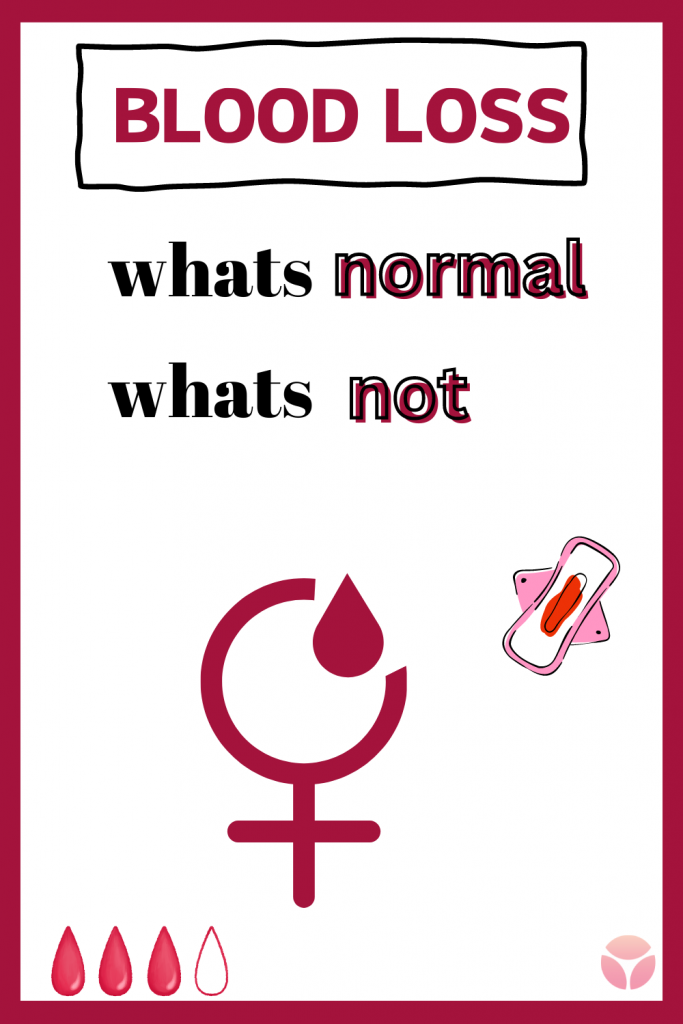
Welcome to a crucial conversation about your menstrual health, where knowledge meets empowerment. Today, we’re diving deep into the intricate details of your actual period, discovering what’s healthy and normal blood loss on your period. Equally crucial, we equip you with the knowledge to discern what deviates from the healthy norm.
Empowered with this understanding, you can confidently advocate for your own well-being, taking proactive measures to steer your menstrual health toward a positive transformation.
Who knew there would be 5 Crucial Factors to determine if your period is within the bounds of normalcy? So, grab a cup of tea, get comfortable, and be empowered to gauge the health of your menstrual cycle with confidence. Let’s embark on this enlightening journey together.
1. The Start of Your Cycle: Differentiating Between Full Flow and Spotting
Your period should begin promptly with full flow, not with mere spotting. It’s essential to understand the distinction between a ‘full flow period’ and ‘spotting’ to accurately track your menstrual cycle.
Full flow entails bright red blood that necessitates the use of pads, tampons, or menstrual cups.
Spotting, on the other hand, is minimal bleeding that occurs between menstrual cycles or just before/after your period. It appears as droplets of brownish or light pink blood, usually seen when you wipe or on your underwear. Remember, spotting is not part of your period and should be noted separately in your tracking.
For instance, if your bleeding begins with light brown blood, necessitating only a panty liner, it qualifies as spotting and is considered part of your ongoing menstrual cycle. In period tracking apps, this is logged as spotting. However, when you see bright red blood that requires sanitary items, this becomes Day 1 of your next menstrual cycle.
2. The Duration of Blood Loss: How Long You Bleed Matters
Healthy periods typically last 2-7 days.
1-2 days of bleeding can be considered scanty and might cause difficulty in trying to conceive, but not always.
It is certainly NOT healthy or normal to be bleeding for more than 7 days. If you get your period on a Sunday, by the following Sunday there should be no blood, your period should be finished.
Your period will naturally taper off but we ideally don’t want spotting for too many days. Oftentimes, spotting is experienced at the end as the period finishes up. If you find yourself continuously spotting, it’s time to pay attention.
3. Tracking Blood Loss: How Much is Normal?
On average, a woman loses about 50ml (approximately 2 tablespoons) of blood during her entire 2-7 day period.
To put this into perspective, a fully soaked regular pad or tampon holds around 5ml, and a super pad or tampon holds about 10ml. Therefore, ten fully soaked regular pads or tampons over your entire period equals 50ml of blood loss and 5 fully soaked super pads or tampons over your entire period also equals 50ml of blood loss.
If your blood loss falls below 20ml, it’s considered scanty. Conversely, if it exceeds 80ml, it’s categorised as menorrhagia, indicating heavy bleeding, which is abnormal uterine bleeding.
To precisely gauge your blood loss, pay attention to the size (super or regular) and number of sanitary products you use and how full they are (full or half), including overnight pads. This method ensures a more accurate assessment of your menstrual health.
For instance, if you use 5 fully soaked regular pads or tampons and 5 half-filled pads or tampons, the calculation would be:
25ml + 12.5ml = 37.5ml of blood loss for this period.
Alternatively, if you used 6 fully soaked super pads or tampons, 6 fully soaked regular pads or tampons, and 4 half-filled regular pads or tampons, the calculation would be:
60ml + 30ml + 20ml = 110ml of blood loss for this period.
For patients using menstrual cups, I instruct them to measure the actual blood loss. Unfortunately, for those using period undies, there’s no precise way to measure. In such cases, I recommend reverting to pads or tampons temporarily to determine if their blood loss falls within a healthy range.
To summarise:
Healthy and Normal Blood Loss:
Between 30-80ml, with an average of 50ml blood loss.
Not Healthy or Not Normal Blood Loss:
Less than 20mls or more than 80mls blood loss.
When it comes to heavy period loss, here are some red flags to be aware of:
- You shouldn’t need to change your pads or tampons more frequently than every 2 hours, certainly not hourly.
- Changing at night isn’t necessary as blood loss usually slows down during the night.
- You should never need more than one tampon at a time.
- There shouldn’t be concerns about leaking or soaking through a pad or tampon in under 1 hour.
- Period undies shouldn’t be soaked through in a short time frame, and bleeding through to your clothes isn’t normal.
If you’re experiencing blood loss exceeding 80ml, it’s advisable to consult a healthcare professional to determine the cause. We can assist you with treatments to reduce your excessive loss.
It’s important to note that if your cycle is regular, and if your flow is consistent every period and your overall health is excellent, this might be normal for you. However, it’s crucial to rule out other possible causes first.
4. The Consistency of Period Blood
Your period is not just blood; it includes endometrial tissue, cervical mucous, and vaginal secretions. However, it should predominantly be liquid. Small clots or stringy bits are normal, but clots larger than 2cm in diameter might signify an issue.
When tracking blood clots and recording them, compare them to coins of money (here in Australia we have 5c, 10c, 20c and 50c pieces), this way there is an objective measurement when consulting with your health practitioner.
Larger clots and heavy bleeding often go hand in hand. When your body releases a natural anticoagulant during menstruation, it prevents blood from clotting excessively. If your flow is heavy, this anticoagulant might not work efficiently, leading to larger clots. If you observe large clots regularly, it’s best to consult your healthcare practitioner.
5. The Colour Palette of Your Period
The colour of your menstrual blood can provide valuable insights. Bright red indicates a faster flow, while dark red suggests slower bleeding. As your period progresses, the blood darkens, often appearing dark or light brown on your sanitary products due to exposure to air. However, if you see black or tarry-looking blood, you may want to bring this up with your doctor. This coloration can simply signify old blood that hasn’t been shed efficiently or it could indicate an underlying issue, possibly an infection. If you notice this, it’s imperative to seek medical evaluation promptly.
For a complete guide to “What is a Healthy, Normal Period” and to understand the 9 signs and symptoms to track during your menstrual cycle, please visit my previous article here.
Understanding these nuances of your menstrual cycle empowers you to recognize potential issues and take proactive steps toward your reproductive health. Remember, your body communicates with you; all you need to do is listen. If any of these signs raise concerns and you discover that you might not experience a healthy and normal blood loss on your period, don’t hesitate to reach out to me or another healthcare professional. Your well-being is our priority.
In health and support,
Amanda xx
Naturopath & Fertility Educator
